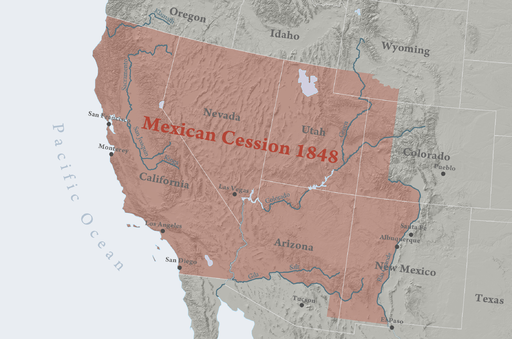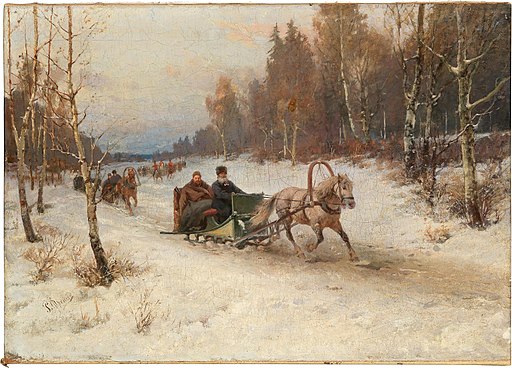Powering Down

An alley behind Connecticut Avenue, N.W., in the Dupont Circle neighborhood of Washington, D.C., with power lines weighed down by heavy, wet snow from the blizzard of February 2010. Photo by AgnosticPreachersKid.
— Vita




It’s interesting that a talk show, of all formats, can hold up to scrutiny from thirty years on, because much of the political jokes and movie and television show plugs from the era of original airing have of course dated, and some may even be incomprehensible to many viewers now. What makes return viewing worthwhile is the charm and charisma of the host, Johnny Carson, in relating to his guests; the polish of the show’s production and its good natured sensibility; and the view into a world which expected a little more from its viewers in the form of attention span and intellectual capacity than what is expected today by most of the late night television media, never mind the distorted mirror held up to our society by the trashy daytime shows which we acknowledge with revulsion or delight, depending on our point of view.
— Vita 









Giving some state workers an extra day off is a poor excuse for continuing a holiday that most people have little enthusiasm for observing. There are small groups of Southern history enthusiasts who gather in Lexington, Virginia, every year on the long weekend (long, but not very long, because it includes Friday, but generally not Monday), where both Robert E. Lee and Thomas “Stonewall” Jackson are buried. Washington and Lee University, a private institution in Lexington, and the place where General Lee was president from shortly after the Civil War until his death in 1870, only recently started distancing itself from the Confederate memorializing controversy by refusing to lend its facilities to these Southern history groups and by canceling classes on Martin Luther King Jr. Day.
The Southern history enshrined by observances like Lee-Jackson Day and by monuments to the Confederacy is a peculiarly blinkered history, however, and for enthusiasts of that narrow vision to act perplexed when some other folks object is either daftly naive or disingenuous, more likely the latter. In the Jim Crow days of the late nineteenth and early twentieth century when many of the Confederate memorializing was first officially sanctioned as a means of reminding everyone who was still really in charge in the South, fans of the Confederacy could be quite open about their views and not be concerned over anyone’s objections. It was easier then to point out such people for what they were, even if it was harder to do anything about it.

The regional holiday of Lee-Jackson Day is a holdover from the Jim Crow era, and for the people of that time, who could be open about their white supremacist views, the holiday certainly represented something less innocuous than the claims today’s Southern history enthusiasts make for it. Some of those Confederacy fans understand that, but they also understand that these days it behooves them to be less open about their views, in great part due to the legacy of Dr. King. Nowadays they are often as not passive-aggressive in defiance of others’ objections to their glorification of white supremacy, saying “Oh, does this [Confederate statue, battle flag, etc.] bother you? I’m so sorry to bruise your delicate feelings, Snowflake.”
Such people may be ignorant of the view of their hero, General Lee, who did not approve of memorializing the Confederacy because it would prevent wounds opened by the war from healing. It could be, however, that since they are not the ones who suffered any wounds, they lack the imagination or the empathy to understand Lee’s sentiment. Then there those who recognize the wounds in others and seek to keep them open, even salting them occasionally, because it gives them power or satisfies their spitefulness. Those are the ones who held rallies in Charlottesville, Virginia, in July and August of last year. Everyone should consider honestly then whose interests are served by propping up outdated and outmoded Confederate memorializing, whatever form it takes, and by relating a history of stars and bars while glossing over shackles and whips.
― Vita 
This coming Monday at 5pm, Supreme Leader has promised to announce the winners of the Fake News awards, according to him. Media personalities are lining up for the most prestigious of the Fakies awards, because to be called a liar by the biggest liar of them all is quite an honor. Stephen Colbert of the Columbia Broadcasting System (CBS) talk program The Late Show has taken out an ad in New York City’s Times Square to promote himself and his show for Supreme Leader’s top honors. This is becoming a big deal.
The enemy of my enemy is my friend – that’s the operating principle here. To be called out for Fake News by the biggest liar in the country is not only praise of a kind, but an endorsement. And now Supreme Liar will be bestowing awards of some sort on the highest honorees, though what that might be he has not made clear yet. Suffice to say that any news organization would be satisfied with the honor alone because of the boost to their ratings or readership, never mind the additional prestige. This must have been what Supreme Egotist meant in his recent New York Times interview when he suggested the media needs him around for the re-election campaign in 2020 to boost their income.

One important point that needs addressing here is that this very website has been first and foremost in denouncing the regime of Der Lügner since it started, and should therefore be in line to receive a Fakie as a promulgator of Fake News by light of how the regime judges these things. If this website receives a Fakie on Monday, rest assured the glow of its bestowal will shower contributors and readers alike with a penumbra of honor from an unimpeachable source – or an impeachable one, as may be the case.
― Vita 


The latest development in the continuing tug of war between sellers and buyers that deserves mention is the one in which grocers have challenged the math skills of shoppers beyond simply rounding fractions off to the nearest dollar by posing more complicated division skills, such as 4/10.00, 5/12.50, or 10/16.90. These are not terribly difficult math problems, and many people would not need a calculator to figure them out. This pricing ploy is instead an attempt by the retailer to get the consumer to buy more of the item not only by suggesting it is a great value, but also by confusion over what the price is per unit.
Particularly when the consumer has to compare one item priced in such a manner to a similar item priced in the same way, the laziness and confusion of the shopper works to the advantage of the retailer. In that case, even buyers who do not have a calculator with them should take comfort in understanding that by law in most places they do not have to pick up the suggested amount in order to take advantage of the advertised price. A “Buy one, bet one free” promotion, for example, does not necessarily require the shopper to pick up two items in order to receive the benefit of buying only one item at half price. As always, however, caveat emptor – buyer beware – and check with the store manager to be sure of the applicable policy.
― Vita 

In Henry Ford’s day, Jews could be openly cast as the Other. After World War II and the Holocaust, that was no longer acceptable, and vilification of the Other settled on Communists, or Reds. The latest target of right wing objectification of an ideological and cultural Other is political correctness, a movement that started in the 1980s and has at times veered into ludicrously priggish stifling of dissenting opinion and alternative behavior, making it easy for the right wing to get outraged about it. Some people mock the excesses of political correctness, while right wingers alternate between mockery and spitting rage. Since political correctness is neither a religion, like Judaism, nor an entire political system, like Communism, the casting of its adherents as the Other by the right wing does not follow the same strand of unalloyed hatred.
Viewed by the right wing, and by some in the rest of society, advocates of political correctness are sociological scolds who are bent on taking away every last bit of cultural heritage of white European culture in America. The Nanny State description sums up the right wing view of the political correctness movement. When a story like the “Jingle Bells” one comes along then, right wingers are primed to pounce on it and vent their anger by putting words into Professor Hill’s mouth, making her a cipher for opinions she never expressed. In the “War on Christmas”, the right wingers proclaim “you are either with us or against us”. As a reward for her scholarship, poor Professor Hill got caught up in the culture war and got set up and knocked down as the right wing’s straw woman of the moment.
― Vita 
Talking Heads perform “Slippery People” in the 1984 concert film Stop Making Sense.
One police officer convicted. Police kill over one thousand citizens each year. Are over 99 percent of those killings entirely justified? If even 50 percent of the killings were justified in the eyes of the law, when will the other 500 or more killers who acted outside the law be convicted, even though they carried a badge? A badge is not an excuse to hide behind, it is a public trust to be borne with solemn consideration of the responsibilities the citizenry expects the bearer to uphold. Whose streets? The people’s streets.
― Vita 